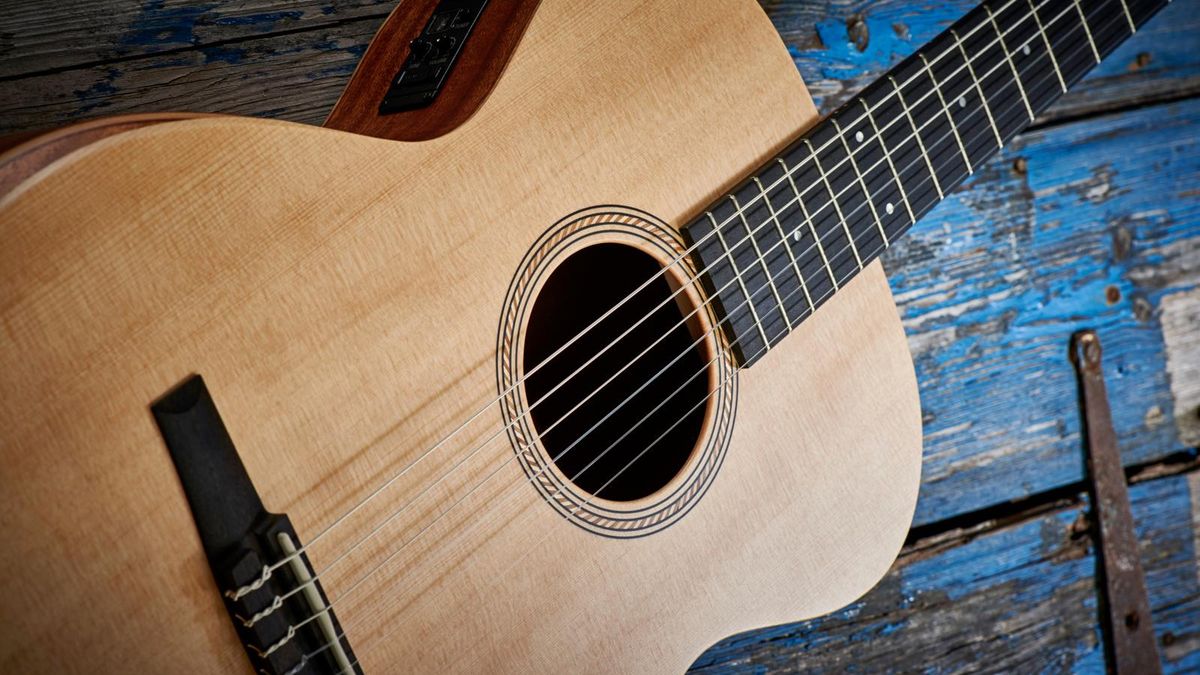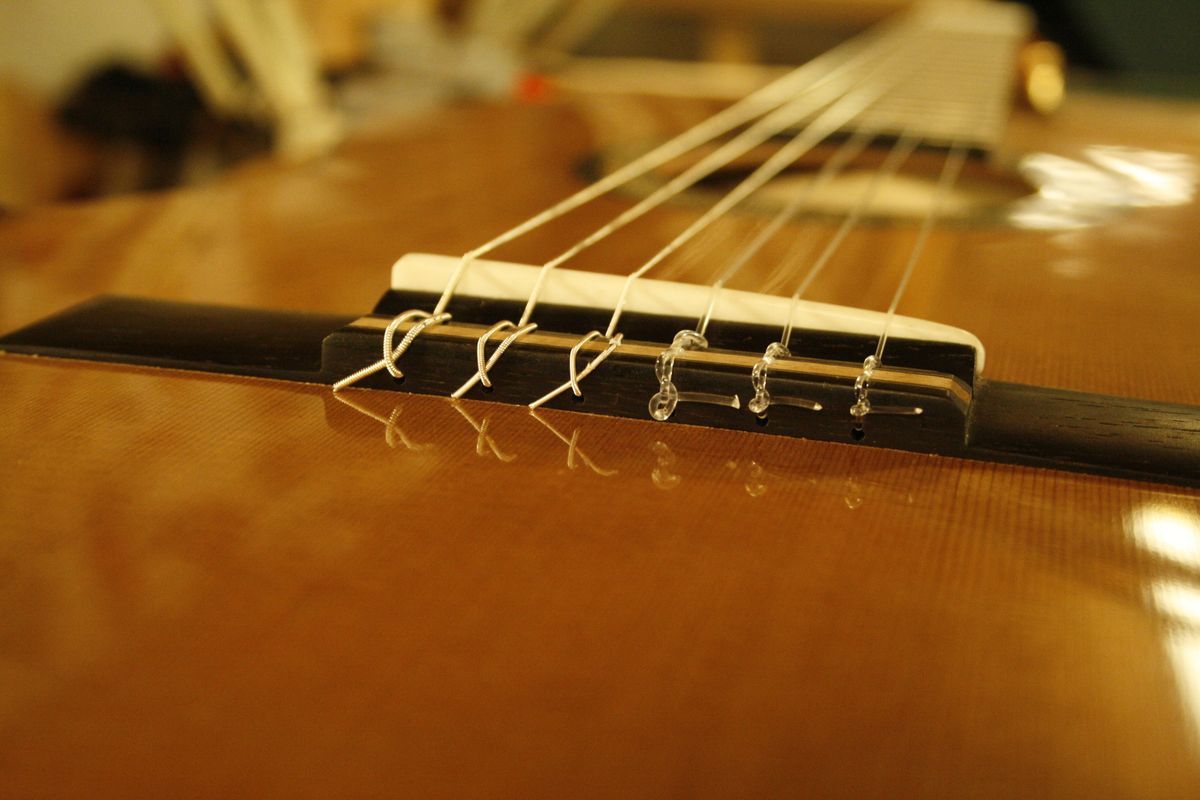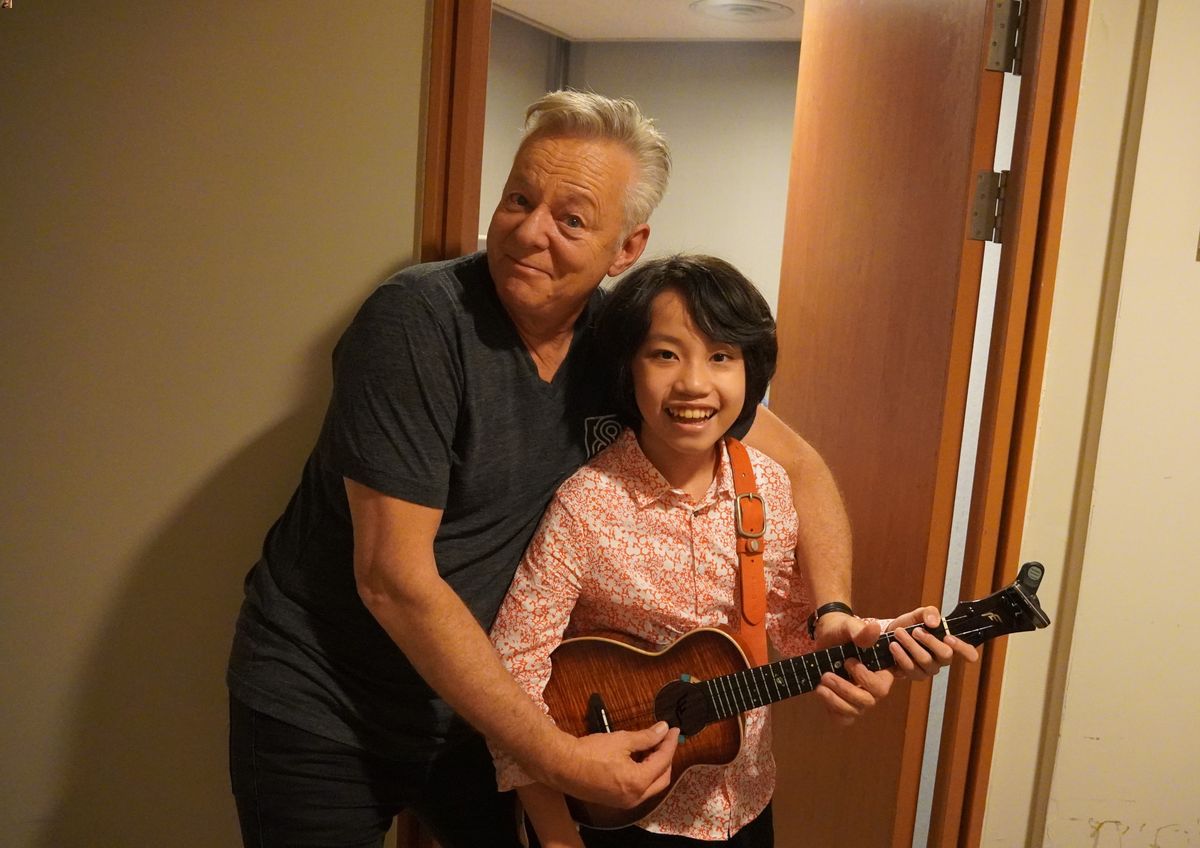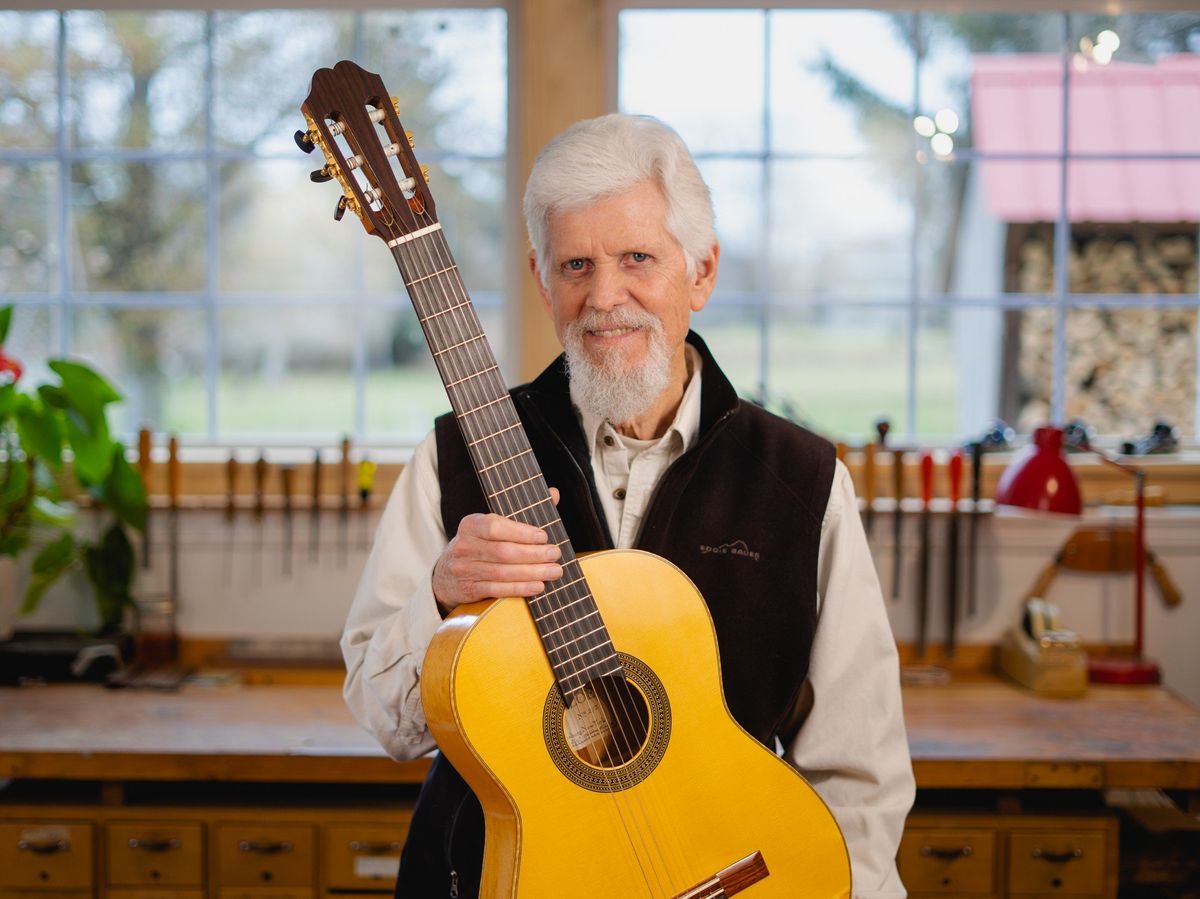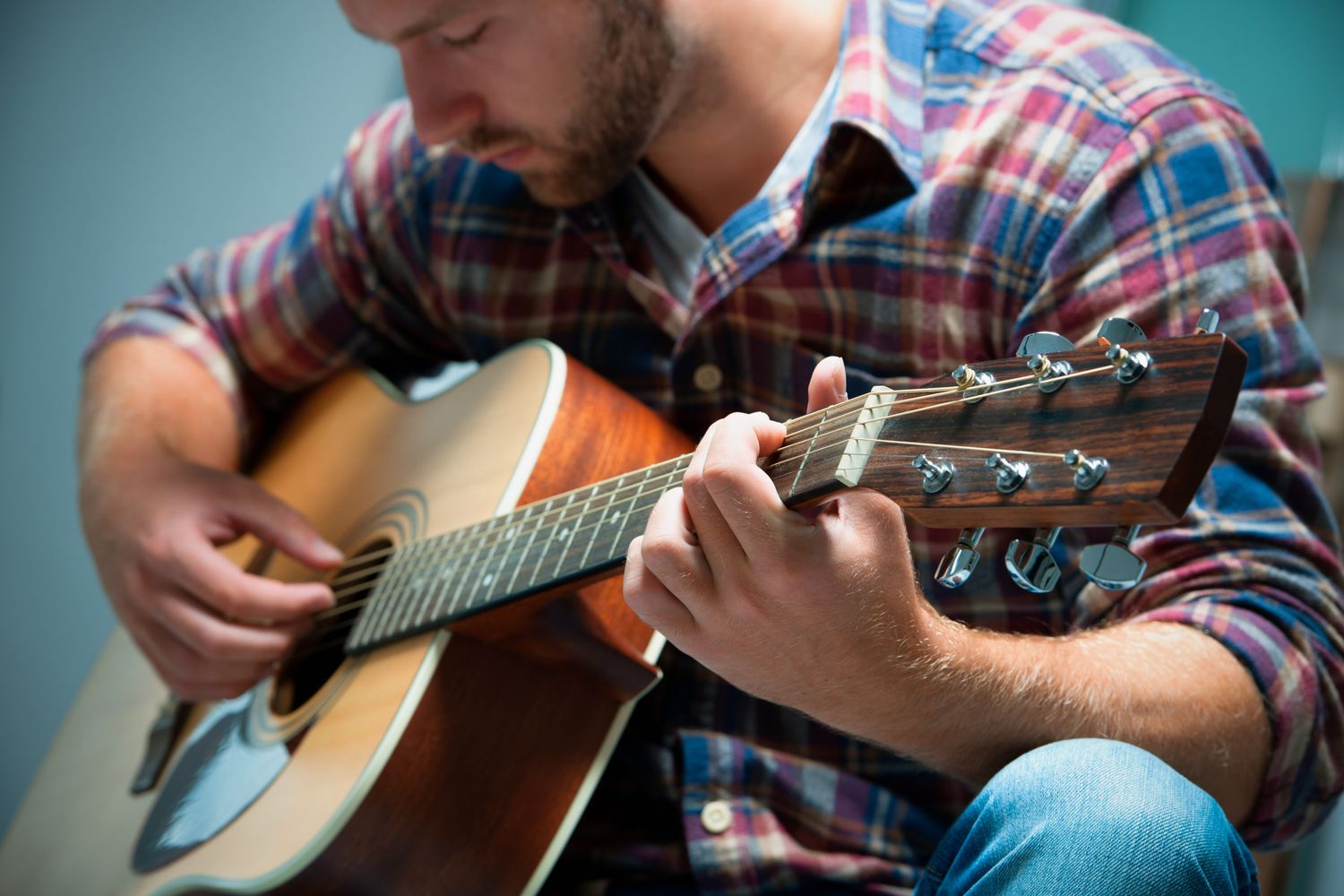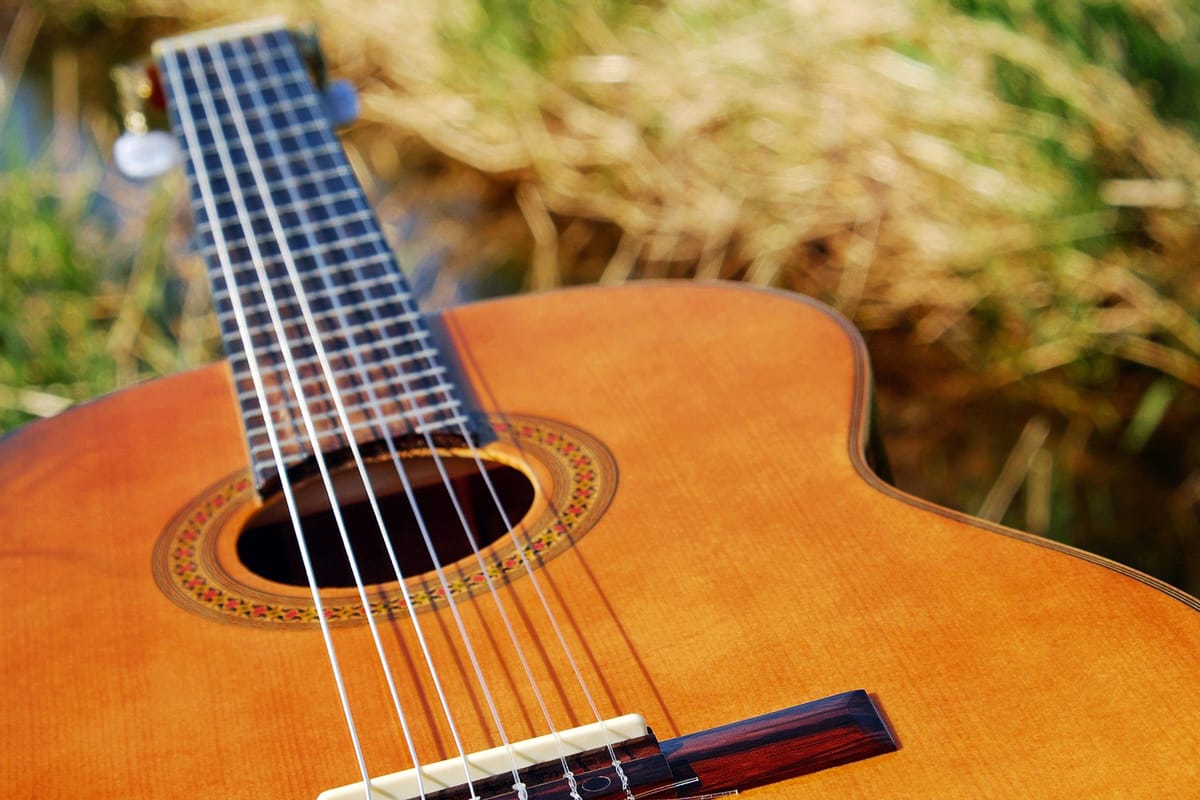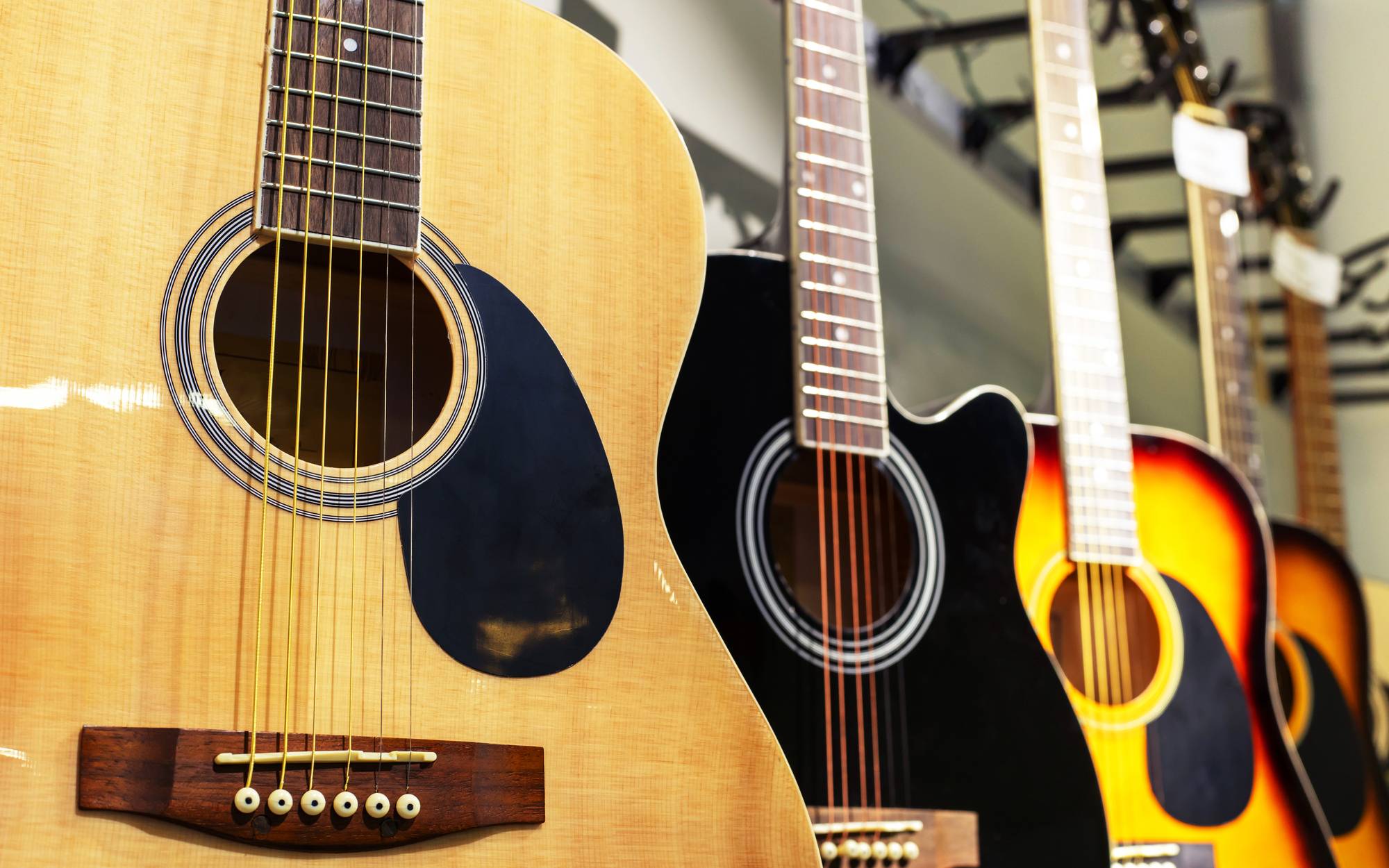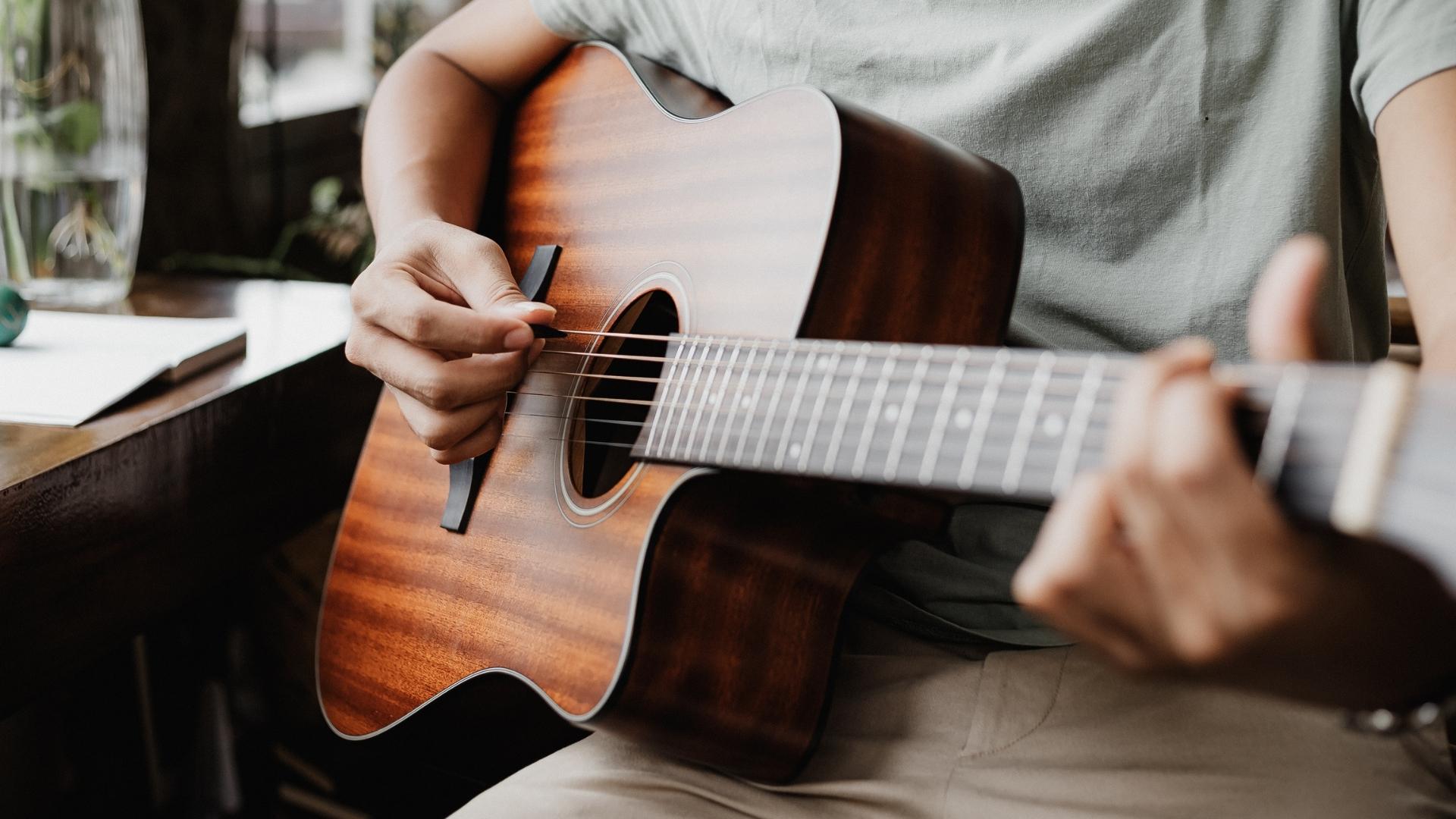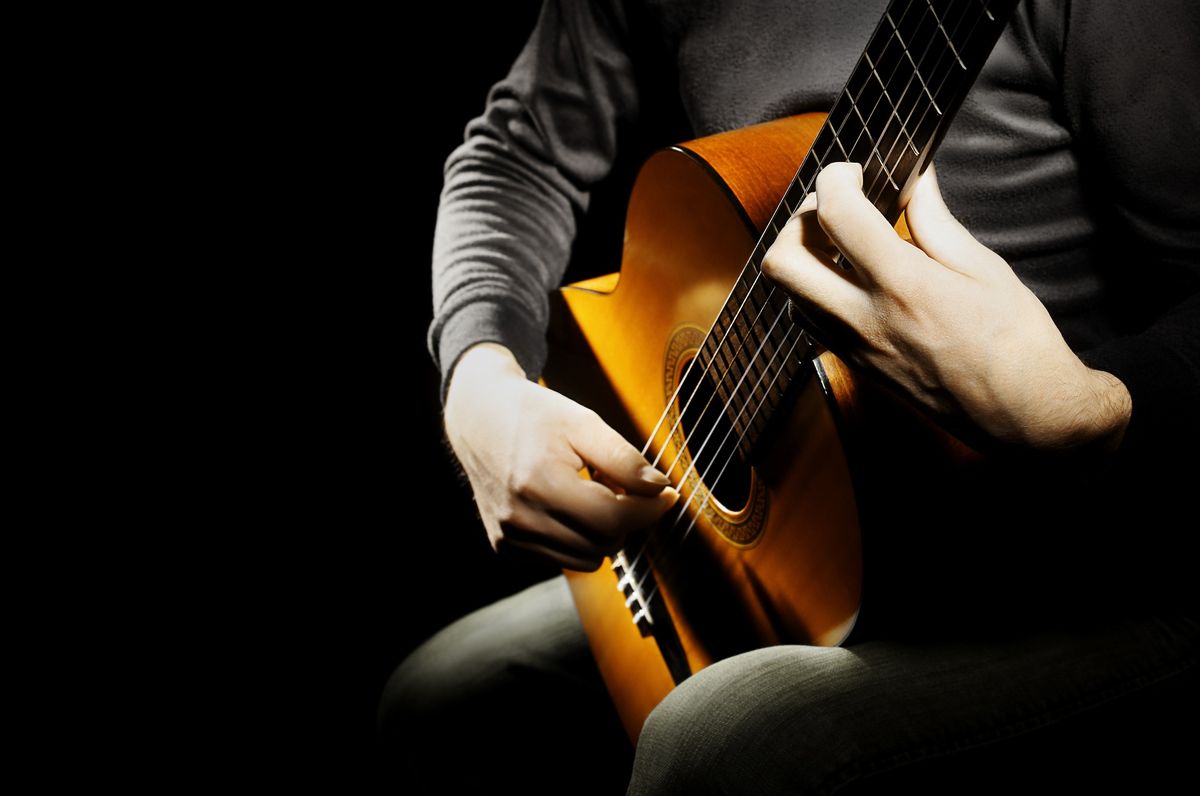

Classical
How To Play Classical Guitar
Modified: February 1, 2024
Learn the art of playing classical guitar with our step-by-step guide. Discover classical techniques, chords, and repertoire to master the beautiful sounds of the classical genre.
(Many of the links in this article redirect to a specific reviewed product. Your purchase of these products through affiliate links helps to generate commission for AudioLover.com, at no extra cost. Learn more)
Table of Contents
- Introduction
- Choosing the Right Classical Guitar
- Proper Sitting and Guitar Posture
- Holding the Guitar
- Proper Hand Positioning
- Basic Classical Guitar Techniques
- Fingerstyle vs. Pick Technique
- Learning Basic Music Theory
- Reading Classical Guitar Sheet Music
- Building a Repertoire of Classical Guitar Pieces
- Practicing and Developing Technique
- Tips for Effective Practice Sessions
- Common Mistakes to Avoid
- Troubleshooting and Problem-solving
- Seeking Guidance from a Classical Guitar Teacher
- Conclusion
Introduction
Welcome to the world of classical guitar, where timeless melodies and intricate fingerstyle techniques come together to create beautiful music. Whether you’re a beginner or an experienced guitarist looking to explore a new genre, learning to play classical guitar can be a rewarding and fulfilling journey.
Classical guitar has a rich history, dating back hundreds of years. It is known for its distinct sound, refined technique, and the ability to convey a wide range of emotions. Unlike other types of guitars, classical guitars feature nylon strings, which produce a warm and mellow tone. This unique sound makes classical guitar music perfect for intimate settings, solo performances, or even accompanying a full orchestra.
In this article, we will guide you through the fundamental aspects of playing classical guitar, from choosing the right instrument to mastering essential techniques. Whether you aspire to be a concert guitarist or simply want to add a new dimension to your musical repertoire, this comprehensive guide will provide you with the knowledge and skills you need to get started.
Throughout the article, we will cover topics such as proper sitting and guitar posture, hand positioning, basic classical guitar techniques, and reading sheet music. We will also offer tips for effective practice sessions, troubleshoot common mistakes, and discuss the benefits of seeking guidance from a classical guitar teacher.
Before we delve into the technical aspects of playing classical guitar, it’s important to remember that learning to play any musical instrument takes time, patience, and dedication. It’s not just about mastering the technical skills but also about cultivating a deep appreciation for the art form and connecting with the music on a profound level.
So, if you’re ready to embark on a musical journey that combines history, technique, and emotion, let’s dive into the world of classical guitar and unlock your potential as a guitarist.
Choosing the Right Classical Guitar
When it comes to playing classical guitar, choosing the right instrument is crucial. A good-quality guitar not only enhances your playing experience but also contributes to the tone and sound quality of your music. Here are a few factors to consider when selecting a classical guitar:
- Quality: Look for a guitar made from high-quality materials and craftsmanship. The top (soundboard) should be made of solid wood, such as cedar or spruce, as it has a significant impact on the guitar’s tone.
- Budget: Determine your budget range before starting your search. While it’s possible to find affordable options, keep in mind that premium guitars often come with a higher price tag.
- Playability: It’s essential to find a guitar that feels comfortable in your hands and is easy to play. Pay attention to the neck shape, width, and action (string height) to ensure a comfortable playing experience.
- Sound: Consider the type of sound you prefer. Classical guitars offer a range of tones, from warm and mellow to bright and vibrant. Try out different guitars to find the one that resonates with your musical preferences.
- Size: Classical guitars come in various sizes, including full-size, 3/4, and 1/2. Choose a size that suits your body and hand size, as it will affect your comfort and reachability on the fretboard.
It’s important to remember that everyone’s musical journey and preferences are unique. What works for one person may not work for another. Therefore, take the time to visit music stores, play different guitars, and seek advice from experienced guitarists or teachers. Their expertise and guidance can help you make an informed decision.
Additionally, online research and reviews can provide valuable insights into different guitar models and brands. Look for testimonials from fellow guitarists and consider reputable manufacturers known for producing quality classical guitars.
Lastly, keep in mind that as you progress and refine your skills, you may eventually want to upgrade your guitar. So, while it’s important to find a suitable guitar to start with, also consider your long-term goals and aspirations as a classical guitarist.
By taking the time to choose the right classical guitar, you are setting yourself up for a more enjoyable playing experience and the ability to truly express yourself through music. So, don’t rush the process – explore, experiment, and find the guitar that resonates with your soul.
Proper Sitting and Guitar Posture
One of the foundations of playing classical guitar is maintaining proper sitting and guitar posture. A good posture not only ensures comfort and reduces the risk of strain or injury but also allows for better technique and control over the instrument. Here are some key points to keep in mind:
- Chair: Choose a chair without armrests that allows you to sit upright with your feet flat on the ground. A chair with a slight incline can provide additional support for your back.
- Position: Sit towards the front edge of the chair, keeping your back straight and your shoulders relaxed. Avoid slouching or leaning back, as this can hinder proper hand placement and technique.
- Guitar Support: Use a footstool or guitar support to elevate your left foot and position the guitar on your left thigh. The angle of the guitar should be slightly upward, allowing for easy access to the fretboard and a more natural hand position.
- Balance: Strive for a balanced posture by aligning your body with the guitar. Distribute the weight of the instrument between your left thigh and your right forearm, with the guitar resting against your chest.
- Relaxation: Maintain a relaxed posture throughout your playing session. Tension in the shoulders, arms, or hands can affect your technique and tone. Take breaks and stretch if you start to feel any discomfort.
Proper sitting and guitar posture may feel unnatural at first, especially if you’re accustomed to playing other types of guitars. However, with practice and consistency, it will become second nature. Developing good posture habits early on will set a solid foundation for your playing technique and ultimately contribute to your growth as a classical guitarist.
Keep in mind that everyone’s body is unique, and what works for one guitarist may not work for another. Experiment with different sitting positions and find what feels most comfortable and allows for easy access to all parts of the guitar.
Lastly, remember that good posture extends beyond your playing sessions. Incorporate exercises and stretches into your routine to improve overall posture and maintain flexibility. This will not only benefit your playing but also promote long-term health and well-being.
By practicing proper sitting and guitar posture, you are setting yourself up for a more comfortable and efficient playing experience. So, take the time to develop good habits from the beginning, and you’ll be on your way to becoming a skilled and expressive classical guitarist.
Holding the Guitar
Once you have established proper sitting and guitar posture, the next step is to learn how to hold the classical guitar correctly. The way you hold the guitar greatly impacts your hand positioning, finger movement, and overall playing technique. Here are the key points to keep in mind:
- Right Arm: Rest your right forearm on the upper bout of the guitar, just below the soundhole. Your arm should be relaxed and parallel to the strings, allowing your hand to move freely across the soundboard.
- Left Arm: Position your left arm so that it supports the neck of the guitar from underneath. Your thumb should be resting on the back of the neck, opposite from the fingers. This position allows for better control and facilitates proper finger placement on the fretboard.
- Guitar Angle: Keep the guitar at a slight angle with the neck elevated, allowing for ease of playing and access to all the frets. The angle will vary depending on your preference and comfort, so experiment to find what works best for you.
- Balance: Maintain a balanced grip on the guitar. Avoid gripping too tightly, as this can limit your finger movement and create unnecessary tension. Find a balance between a secure hold and relaxed fingers.
- Strap (Optional): If you prefer to use a strap for added support, attach it securely to the guitar and adjust the length to a comfortable position. This can be beneficial for extended playing sessions or if you like to stand while playing.
Remember, the goal is to find a balanced and relaxed grip that allows for easy navigation of the fretboard and optimal finger movement. Experiment with different hand positions and angles to find what feels most comfortable and natural for you.
It’s also important to note that as you progress and explore more advanced techniques, your hand positioning and grip may slightly change. This is perfectly normal and part of the ongoing learning process. Adaptability and flexibility in your hand positioning will allow you to tackle diverse musical passages and enhance your playing capabilities.
Lastly, always prioritize comfort and avoid any posture or hand positions that cause pain or strain. If you experience discomfort, adjust your hand positioning, take breaks, or seek guidance from a guitar teacher.
By mastering the art of holding the guitar with the correct technique, you will lay the foundation for efficient finger movement, better control, and ultimately, the ability to express yourself fully through the instrument. So, take the time to practice and refine your grip, and you’ll be on your way to becoming a confident and skilled classical guitarist.
Proper Hand Positioning
Proper hand positioning is vital for playing classical guitar with precision, speed, and control. By placing your hands correctly on the instrument, you will optimize your technique and produce clean, articulate notes. Here are the key points to consider:
- Right Hand: Rest your right hand on the strings, just above the soundhole. The fingers should be curved, slightly hovering above the strings, ready to pluck or strum. Use the fingertips to strike the strings and produce a clear and resonant sound. Avoid excessive tension in your hand and fingers, as this can hinder your technique and tone.
- Thumb Position: Position your right thumb behind the fingers, resting on or slightly above the soundboard. This provides stability and control while allowing your fingers to move freely across the strings. Avoid trailing your thumb too far behind the fingers, as it can restrict your finger movement and create tension.
- Left Hand: Place your left hand on the neck of the guitar with the thumb resting on the back. The fingers should be curved and ready to press down on the strings. Each finger is responsible for a specific fret, with the index finger typically covering the first fret. Apply firm and even pressure with the fingertips to ensure proper string contact and clear notes.
- Finger Independence: Develop finger independence by practicing exercises that focus on each finger individually. This will allow you to execute complex fingerings and transitions smoothly. Work on strengthening your weaker fingers to achieve balance and dexterity in your playing.
- Hand Relaxation: Strive for a relaxed hand position in both hands. Tension can inhibit speed, fluidity, and expression in your playing. Regularly check in with your hands to ensure you’re not gripping too tightly or tensing up. Take breaks and stretch if you feel any fatigue or tension building up.
Remember, hand positioning is a foundational aspect of classical guitar playing. It may take time and practice to develop the muscle memory and control required for proper technique, but it is well worth the effort. Consistent focus on hand positioning will lead to better control over the instrument and allow for greater nuance and expressiveness in your playing.
As with any aspect of playing the guitar, seek guidance from an experienced teacher or mentor who can provide personalized feedback and help you refine your hand positioning. They can offer insights and specific exercises tailored to your needs and help you overcome any challenges you may encounter along the way.
By mastering proper hand positioning, you will unlock a world of possibilities on the classical guitar. So, practice mindfully, be patient with yourself, and enjoy the journey of discovering the immense beauty and versatility of this timeless instrument.
Basic Classical Guitar Techniques
Mastering the fundamental techniques is essential for playing classical guitar with precision and musicality. These techniques provide the building blocks for more advanced playing styles and repertoire. Here are some of the basic techniques you should practice and develop:
- Fingerstyle: Classical guitar is predominantly played with the fingers rather than a pick. The most common fingerstyle technique is known as “rest stroke,” where the finger plucks the string and comes to rest on the adjacent string. This produces a focused and clear sound. Develop control and accuracy in your fingerstyle technique by practicing scales, arpeggios, and simple melodies.
- Thumb Technique: The thumb plays a crucial role in classical guitar playing. It is primarily responsible for playing the bass notes and creating a solid foundation for the music. Practice thumb technique exercises, such as playing thumb arpeggios and maintaining a steady bass line while simultaneously playing melodies or chords with your fingers.
- Legato: Legato refers to playing notes smoothly and connectedly. This technique is achieved by minimizing the gaps between successive notes. Practice slurs, hammer-ons, and pull-offs to develop legato technique and create seamless transitions between notes and phrases.
- Vibrato: Vibrato is a technique used to add expressiveness and warmth to notes. It involves subtly bending and releasing the string to produce a slight variation in pitch. Experiment with different vibrato techniques and speeds to find your own unique style.
- Phrasing: Phrasing refers to shaping and articulating the musical phrases to convey emotions and dynamics. Focus on using dynamics, such as playing softer or louder, and adding subtle variations in timing and emphasis to bring out the musicality of the piece.
- Articulation: Articulation refers to how you attack and release the notes. Experiment with different ways of plucking the strings to achieve different tones and effects. Practice techniques such as staccato (short and detached), legato (smooth and connected), and accents to add depth and texture to your playing.
These are just a few of the basic classical guitar techniques you will encounter as you progress in your playing. Remember to start slowly and focus on accuracy and control before increasing speed. Regular practice and repetition will help you refine these techniques and incorporate them seamlessly into your playing.
As with any instrument, it is important to practice these techniques consistently and in a structured manner. Consider working with a classical guitar teacher who can guide you through proper technique and provide personalized feedback and exercises tailored to your needs.
By dedicating time and effort to mastering these basic techniques, you will build a strong foundation for your classical guitar playing and develop the skills necessary to tackle more advanced repertoire and explore your own musical expression. So, practice diligently, be patient with yourself, and embrace the joy of discovering the limitless possibilities of classical guitar.
Fingerstyle vs. Pick Technique
When it comes to playing the classical guitar, one of the key decisions you’ll need to make is whether to use fingerstyle or pick technique. Both approaches have their own advantages and characteristics, and the choice ultimately depends on your personal playing style and the sound you want to achieve. Let’s compare and contrast these two techniques:
Fingerstyle Technique:
Fingerstyle technique involves plucking the strings with your fingers, usually the thumb, index, middle, and ring fingers. This technique allows for greater control, versatility, and a wider range of expressive possibilities. Some benefits of fingerstyle technique include:
- Tone: Fingerstyle produces a warm and rich tone, thanks to the use of the flesh of your fingers. This enables you to explore different tonal variations and nuances.
- Polyphony: Fingerstyle allows for the simultaneous playing of melody, bass notes, and chords. It allows you to create complex and intricate arrangements.
- Dynamic Range: With fingerstyle, you have better control over dynamics, enabling you to play both soft and loud passages with great precision.
- Articulation: Fingerstyle technique enables you to achieve a variety of articulations, including legato, staccato, and vibrato, by using your fingertips and varying degrees of finger pressure.
- Adaptability: Fingerstyle technique is highly adaptable to different musical genres and playing styles, including classical, flamenco, folk, and jazz.
Pick Technique:
Pick technique, also known as plectrum technique, involves using a guitar pick to strike the strings. It offers a different set of advantages and creates a distinct sound. Here are some key aspects of pick technique:
- Attack and Clarity: Using a pick produces a sharper attack and a brighter tone, which can be desirable for certain styles of music like rock, blues, and country.
- Speed and Precision: Picks allow for faster picking techniques, such as alternate picking and sweep picking, which can be advantageous for intricate and fast-paced passages.
- Consistency: Picks provide a consistent tone and volume, making it easier to achieve a uniform sound across different playing situations.
- Strumming: A pick is commonly used for strumming chords, as it allows for a more powerful and pronounced sound, particularly on steel-string guitars.
- Transitional Ease: If you’re transitioning from playing other styles like electric or acoustic guitar, using a pick might feel more familiar and comfortable.
In the end, the choice between fingerstyle and pick technique largely depends on your personal preferences, musical goals, and the style of music you want to play. Many classical guitarists prefer to specialize in fingerstyle technique to fully explore the expressive capabilities of the instrument. However, it’s worth noting that some guitarists incorporate elements of both techniques into their playing, depending on the musical context.
Regardless of the technique you choose, it’s essential to dedicate time to practice and refine your skills. Regular and focused practice will help you develop and improve your chosen technique, allowing you to fully express your musical ideas on the guitar.
Remember, there is no right or wrong choice when it comes to fingerstyle versus pick technique. What matters most is finding a technique that resonates with your musical style, allows for self-expression, and brings you joy as a guitarist.
Learning Basic Music Theory
Understanding the fundamentals of music theory is a valuable asset for any classical guitarist. It provides a framework for interpreting and analyzing the music you play, enhances your musicality, and opens up opportunities for composition and improvisation. Here are some key aspects of basic music theory that every classical guitarist should learn:
Notes and Pitch:
Begin by familiarizing yourself with the musical alphabet, which consists of the notes A, B, C, D, E, F, and G. These notes repeat across the guitar’s fretboard. Learn to read musical notation and associate the notes on the staff with their corresponding pitches on the guitar.
Scales and Keys:
Explore major and minor scales, as they form the foundation for most melodies and harmonies in Western music. Learn the construction, fingering patterns, and intervals of these scales. Understand the concept of keys, which determine the tonal center of a piece of music, and how they relate to different scales.
Chords and Harmony:
Delve into chord construction and the different types of chords, such as major, minor, and dominant. Learn how to form and play common chord progressions, which are sequences of chords that create a sense of harmony and structure in music.
Rhythm and Time Signatures:
Study rhythmic notation, including note values (whole, half, quarter notes, etc.), rests, and time signatures. Time signatures indicate the number of beats per measure and the type of note that receives one beat. Familiarize yourself with common time signatures, such as 4/4, 3/4, and 6/8.
Intervals and Transposition:
Learn about intervals, which are the distances between two notes. Understand the different types of intervals, such as unison, octave, major, minor, perfect, etc. Explore transposition, the process of changing the pitch of a piece of music while preserving its structure and relationships.
Form and Structure:
Gain an understanding of musical forms, such as binary form (AB), ternary form (ABA), and sonata form. Recognize the sections and patterns within a piece of music, such as intro, verse, chorus, and bridge. This knowledge will help you navigate and interpret the structure of classical guitar compositions.
While this is just a brief overview, studying these foundational elements of music theory will greatly enhance your understanding and appreciation of classical guitar music. Integrating theory into your practice routine will provide a deeper level of connection with the music you play.
There are numerous resources available for learning music theory, including books, online courses, and instructional videos. Consider seeking guidance from a music teacher who can provide personalized instruction and help you apply theory concepts to your classical guitar playing.
Remember, learning music theory is an ongoing process. As you progress as a classical guitarist, continue to expand your knowledge and delve deeper into more advanced concepts. Embrace the beauty and intricacy of music theory, and let it become a powerful tool in your musical journey.
Reading Classical Guitar Sheet Music
Reading sheet music is an essential skill for every classical guitarist. It allows you to learn new pieces, decipher musical notation, and interpret the composer’s expressive intentions. While sheet music may seem daunting at first, with practice and patience, you can become proficient in reading classical guitar notation. Here are key points to help you navigate sheet music effectively:
Staff Notation:
Learn to read the musical staff, which consists of five horizontal lines and four spaces. Each line and space represents a different pitch. Notes and symbols are placed on the staff to indicate duration, pitch, and other musical elements.
Notes on the Staff:
Familiarize yourself with the specific placement of notes on the staff. The vertical position of a note determines its pitch. G is located on the second line from the bottom of the staff, and the subsequent notes follow the musical alphabet upwards.
Fingerings and Position Markings:
Pay attention to fingerings and position markings indicated in the sheet music. These help guide your hand placement and suggest which fingers to use for specific notes or passages. Practice playing with the suggested fingerings to develop efficient technique and smooth transitions.
Time Signatures:
Understand time signatures, which are represented at the beginning of a piece or section of music. Time signatures indicate the number of beats in a measure and the type of note that receives one beat. Common time signatures in classical guitar music include 4/4, 3/4, and 6/8.
Key Signatures:
Recognize key signatures, which indicate the tonal center of a piece. Key signatures are represented by sharps (#) or flats (b) placed at the beginning of each staff line. Understanding key signatures will help you identify the scales and chords used in the music.
Dynamics and Articulation:
Pay attention to dynamic markings (soft, loud) and articulation symbols (staccato, legato, accents) in the sheet music. These indications give insight into the expressive qualities and phrasing of the music. Practice incorporating these elements into your playing to enhance the musicality of the piece.
Repeats and Segno/Coda:
Look for repeat signs (double barlines with two dots) and segno/coda markings. Repeats indicate sections of the music that should be played multiple times. Segno and coda markings guide you to specific sections of the piece, allowing for non-linear progression through the music.
Practice Slowly:
When first learning a piece, take your time and work through it slowly. Break it down into smaller sections to grasp the intricacies of the notation and fingerings. Gradually increase the tempo as you become more comfortable and confident.
Reading classical guitar sheet music is a skill that improves with consistent practice and exposure to various compositions. Consider using supplemental resources, such as recordings and videos, to deepen your understanding of the pieces you are learning.
Remember, learning to read sheet music is a lifelong process. Embrace each new piece as an opportunity to advance your reading skills and deepen your musical interpretation. With dedication and perseverance, you will become proficient in reading classical guitar sheet music and unlock the vast repertoire of the classical guitar tradition.
Building a Repertoire of Classical Guitar Pieces
Building a repertoire of classical guitar pieces is an essential part of your development as a classical guitarist. A repertoire not only showcases your skills but also allows you to explore a diverse range of musical styles and express yourself as a musician. Here are some tips to help you build an engaging and well-rounded repertoire:
- Selecting Pieces: Choose a variety of pieces from different musical periods, styles, and composers. Start with simpler pieces suitable for your current skill level and gradually challenge yourself with more complex and demanding compositions.
- Balance of Difficulty: Strive for a balance between technically challenging pieces and those that focus on musicality and interpretation. This will help you develop a well-rounded skillset and keep you engaged in your practice.
- Exploring Genres: Include pieces from various genres within classical music, such as Renaissance, Baroque, Classical, Romantic, and Contemporary. This enables you to experience the rich tapestry of classical guitar repertoire.
- Studying Composers: Familiarize yourself with renowned classical guitar composers like Fernando Sor, Francisco Tárrega, Mauro Giuliani, and Leo Brouwer. Explore their works and find pieces that resonate with your musical preferences.
- Gradual Progression: Gradually increase the difficulty level of the pieces you learn. This allows for continuous growth and development, challenging your technical abilities while expanding your musicality.
- Performance Length: Aim to have a collection of pieces that you can comfortably perform in a recital or concert setting. Having a repertoire of different lengths ensures you are well-prepared for various performance opportunities.
- Consistent Practice: Dedicate regular practice time to your repertoire, focusing on refining each piece. Experiment with phrasing, dynamics, and interpretation to add your unique musical voice to the compositions.
- Recording and Evaluating: Record yourself playing your repertoire to assess your performance objectively. Listen critically and make adjustments as needed to improve your interpretations and technique.
- Seeking Performance Opportunities: Look for opportunities to perform your repertoire, such as community recitals, open mic nights, or student concerts. Performing in front of an audience is invaluable in developing stage presence and confidence.
- Expanding and Evolving: Continually expand your repertoire to include new pieces, whether they are by established composers or contemporary ones. Explore unfamiliar works that challenge and inspire you.
Remember, building a repertoire is a journey that requires patience, dedication, and a lifelong commitment to learning and growth. Continuously explore and refine your repertoire, always seeking to broaden your musical horizons and discover new pieces that capture your imagination.
Lastly, savor the experience of building a repertoire of classical guitar pieces. Each piece you learn becomes a part of your musical identity and contributes to your development as a skilled and expressive classical guitarist.
Practicing and Developing Technique
Practicing effectively is the key to developing strong technique and becoming a proficient classical guitarist. A focused and disciplined approach to practice will not only improve your technical abilities but also enhance your musicality and overall performance. Here are some tips to help you practice efficiently and develop your technique:
- Establish a Daily Practice Routine: Dedicate a specific time each day to practice. Consistency is crucial for progress. Break your practice into focused sessions, including warm-up exercises, technical exercises, repertoire study, and sight-reading.
- Start Slowly: When learning a new technique or piece, begin at a slow tempo. Focus on accuracy and precision before gradually increasing the speed. This approach builds a strong foundation and minimizes the risk of developing bad habits.
- Isolate Challenging Sections: Identify the difficult sections within your repertoire or exercises and focus on them individually. Practice these sections slowly and repetitively, gradually increasing the tempo as you gain proficiency.
- Use a Metronome: Incorporate a metronome into your practice routine to improve your sense of timing and rhythmic accuracy. Start at a comfortable tempo and gradually increase it as your technique improves.
- Vary Your Practice: Practice a variety of exercises and techniques to develop a well-rounded skillset. Include scales, arpeggios, sight-reading, and repertoire study in your practice routine. This diversity challenges your abilities and keeps your practice sessions engaging.
- Focus on Correct Technique: Pay attention to proper hand positioning, finger placement, and overall posture. Practicing with correct technique from the beginning prevents the development of bad habits and ensures efficient and injury-free playing.
- Utilize Slow Motion Practice: Slow motion practice involves playing passages at an extremely slow tempo, scrutinizing every movement and ensuring precise execution. This method helps refine finger coordination and muscle memory.
- Record and Analyze: Record yourself during practice sessions and performances. This allows you to objectively assess your technique, interpretive choices, and areas for improvement. Take notes and make adjustments to enhance your playing.
- Seek Feedback: Regularly seek input from a knowledgeable teacher or mentor who can offer guidance and feedback on your technique. A teacher can identify areas of weakness and provide specific exercises to target them.
- Take Breaks: Give your hands and mind regular breaks during practice sessions. Overplaying can lead to fatigue and potential injury. Listen to your body and rest when needed.
Remember, the quality of your practice is more important than the quantity of time spent. Stay focused, be patient, and celebrate small victories along the way. Regular and deliberate practice will yield significant improvements in your technique, allowing you to express yourself fully as a classical guitarist.
Tips for Effective Practice Sessions
Effective practice sessions are essential for maximizing your progress and achieving your goals as a classical guitarist. By employing efficient and focused practice techniques, you can enhance your technique, musicality, and overall performance. Here are some tips to help you make the most out of your practice sessions:
- Set Specific Goals: Clearly define your practice goals for each session. This could include mastering a particular technique, improving a challenging section in a piece, or increasing speed and accuracy in your playing. Having specific goals keeps you focused and motivated.
- Manage Your Time Wisely: Divide your practice time into smaller, focused sessions. Concentrated practice for shorter periods is often more productive than long, unfocused sessions. Schedule regular breaks to rest your mind and hands.
- Warm Up Properly: Begin each practice session with warm-up exercises to loosen up your fingers and prepare your muscles for playing. This can include finger stretches, simple scales, and slow arpeggios.
- Focus on Technique: Practice technical exercises such as scales, arpeggios, and finger-strengthening exercises. Pay close attention to proper hand positioning, finger placement, and coordination between the hands. Slow and deliberate practice is key.
- Work on Challenging Sections: Identify difficult passages in your repertoire and isolate them for focused practice. Break them down into smaller segments, practice them slowly, and gradually increase the tempo as you gain proficiency.
- Practice Slowly and Accurately: Start practicing at a slow tempo and focus on precision and accuracy. Only speed up when you can consistently play the passage correctly at the slower tempo. This builds a solid foundation for faster playing.
- Utilize Mental Practice: When away from your instrument, mentally visualize and practice the music in your mind. This helps reinforce muscle memory and strengthens your understanding of the piece, allowing for improved performance when you return to the guitar.
- Record and Evaluate: Use a recording device to capture your practice sessions or performances. Listen back critically to identify areas for improvement in your technique, phrasing, and dynamics. This self-assessment helps to refine your playing.
- Follow a Systematic Approach: Follow a structured and organized practice routine. Divide your practice time between technical exercises, repertoire study, sight-reading, and other areas of focus. This ensures a well-rounded development as a guitarist.
- Stay Present and Focus: Practice with full attention and concentration. Avoid distractions and immerse yourself in the music. This level of engagement helps you connect more deeply with the music and make significant progress.
Remember, effective practice requires commitment, discipline, and patience. Embrace a growth mindset and celebrate your progress along the way. By implementing these tips and maintaining a consistent practice routine, you will witness gradual improvement in your technique and musicianship, ultimately realizing your full potential as a classical guitarist.
Common Mistakes to Avoid
As you embark on your journey as a classical guitarist, it’s important to be aware of common mistakes that can hinder your progress and development. By recognizing and avoiding these pitfalls, you can cultivate good habits and make substantial strides in your playing. Here are some common mistakes to watch out for:
- Poor Posture: Neglecting proper sitting and guitar posture can lead to discomfort, tension, and even injury. Maintain an upright posture, support your guitar correctly, and be mindful of any tension or strain in your body.
- Lack of Focus: Practicing without concentration or engagement can impede progress. Avoid mindless repetitions and strive for focused practice, actively listening and making intentional adjustments as you play.
- Inconsistent Practice: Irregular or sporadic practice hinders progress. Establish a consistent practice routine and dedicate regular time to work on technique, repertoire, and musicianship. Consistency is key to achieving steady improvement.
- Neglecting Fundamentals: Failing to dedicate time to fundamental techniques and exercises can limit your growth as a guitarist. Regularly practice scales, arpeggios, and other foundational exercises to build a solid technical foundation.
- Ignoring Music Theory: Neglecting to study music theory can hinder your understanding of the music you play. Learn the basics of music theory, such as scales, chords, and key signatures, to enhance your interpretation and musicality.
- Rushing Tempo: Playing at a faster tempo than you can handle compromises accuracy and musicality. Avoid the temptation to rush and focus on maintaining a steady tempo, gradually increasing speed only when you can play accurately.
- Poor Rhythm and Timing: Ignoring rhythm and timing can lead to sloppy playing. Practice with a metronome to develop a strong sense of timing and rhythm. Pay attention to note duration and rests to ensure precise execution.
- Ignoring Dynamics and Expression: Playing with a lack of dynamics and expression can make your performance sound monotonous. Pay attention to dynamic markings, articulation, and phrasing in the music to convey the emotional depth of the piece.
- Repetitive Practice: Mindlessly repeating the same passage without analyzing and addressing mistakes can reinforce errors. Focus on targeted practice, breaking down challenging sections and working on specific issues to overcome them.
- Overlooking Performance Opportunities: Avoiding performance opportunities can limit your growth as a musician. Seek opportunities to perform in front of others, whether it’s an informal gathering or a formal recital. Performing helps improve confidence and stage presence.
Be mindful of these common mistakes and actively work towards avoiding them in your practice and performances. Remember that progress takes time and patience. Embrace a growth mindset, learn from your mistakes, and continuously strive for improvement. With dedication and perseverance, you will overcome these challenges and develop into a skilled and expressive classical guitarist.
Troubleshooting and Problem-solving
As a classical guitarist, you may encounter challenges or setbacks along your musical journey. Troubleshooting issues and problem-solving are essential skills that will help you overcome obstacles and continue progressing. Here are some common problems you may encounter and strategies for resolving them:
- Fingering Difficulties: If you’re struggling with fingering a passage or finding it difficult to execute a particular technique, isolate the problem area and practice it slowly and consistently. Experiment with different fingerings and hand positions to find the most comfortable and efficient solution.
- Lack of Speed: If you’re having trouble playing fast passages, break them down into smaller segments and practice them slowly with a metronome. Gradually increase the tempo only when you can play accurately and with control.
- Inconsistent Tone Production: If you’re experiencing inconsistencies in tone production, focus on hand position, finger placement, and proper technique. Experiment with variations in finger pressure and the angle of attack to achieve a consistent and balanced tone.
- Difficulty Memorizing Music: If memorization is challenging, break the piece down into sections and practice each section separately. Focus on understanding the musical structure and patterns. Utilize visualization and mental practice techniques to reinforce memory.
- Lack of Expression: If you’re struggling to bring out the expressive qualities of a piece, focus on the musical nuances indicated in the sheet music. Experiment with dynamics, articulation, and phrasing to convey the emotions and intentions of the music.
- Nervousness and Performance Anxiety: If stage fright or anxiety affects your performance, develop strategies to manage it. Practice performing in front of others, visualize successful performances, and utilize relaxation techniques such as deep breathing and positive self-talk.
- Frustration or Lack of Motivation: If you’re feeling frustrated or lacking motivation, take a step back and reassess your approach. Set achievable goals, diversify your repertoire, and find inspiration by listening to recordings and attending concerts. Celebrate small victories and remind yourself why you love playing the guitar.
- Plateau in Progress: If you feel like your progress has plateaued, seek guidance from a teacher or mentor who can offer fresh insights and challenges. They may provide new exercises, repertoire suggestions, or technical adjustments to help you break through the plateau.
- Physical Discomfort or Pain: If you’re experiencing physical discomfort or pain while playing, assess your posture, hand position, and ergonomics. Make necessary adjustments to reduce tension and strain. If the issue persists, seek professional advice from a medical professional or an experienced ergonomic specialist.
Remember that troubleshooting and problem-solving are integral parts of the learning process. Embrace challenges as opportunities for growth and development. Be patient and persistent in your practice, and seek help from teachers, fellow musicians, or online communities when needed. With a positive mindset and a diligent approach to troubleshooting, you can overcome obstacles and continue to evolve as a skilled and expressive classical guitarist.
Seeking Guidance from a Classical Guitar Teacher
Working with a classical guitar teacher can be a transformative and invaluable experience for any aspiring guitarist. A knowledgeable teacher provides guidance, personalized instruction, and feedback that can propel your progress and development. Here are some reasons why seeking guidance from a classical guitar teacher is beneficial:
- Structured Learning: A teacher can provide a structured learning path tailored to your specific goals and skill level. They will help you set realistic expectations and guide you through a well-rounded curriculum that covers technique, music theory, repertoire, and performance skills.
- Proper Technique and Preventing Bad Habits: A teacher ensures that you learn and practice proper technique from the start, preventing the development of bad habits that can hinder your progress and lead to injuries. They also help you address any technical challenges by offering specific exercises and corrective suggestions.
- Personalized Feedback: The feedback and guidance from a teacher are invaluable in identifying areas for improvement that may be overlooked when practicing alone. They can pinpoint technical issues, suggest interpretive choices, and help you refine your musicality and expression.
- Accountability and Motivation: Having regular lessons with a teacher provides a level of accountability that keeps you motivated and focused on your practice. Your progress is monitored, and the teacher can help you overcome obstacles and guide you through any plateaus you may encounter.
- Performance Preparation: A teacher can assist you in preparing for performances, competitions, or auditions. They provide guidance on stage presence, preparation techniques, and strategies to manage performance anxiety, ensuring you are well-prepared for successful performances.
- Repertoire Selection: A teacher can help you choose suitable repertoire that aligns with your skill level and musical interests. They have a deep knowledge of the classical guitar repertoire and can introduce you to a diverse range of composers and musical styles.
- Mentorship and Inspiration: A teacher serves as a mentor and source of inspiration. They instill a love for the instrument and help you navigate the challenges of being a classical guitarist. Their enthusiasm and guidance can fuel your passion and commitment to your musical journey.
- Connections and Networking: A teacher often has connections within the classical guitar community. They can offer opportunities for collaborations, introduce you to fellow musicians, and provide guidance on workshops, masterclasses, and other musical events.
Remember that finding the right teacher is crucial. Look for an experienced and qualified teacher who aligns with your goals and teaching style preferences. Seek recommendations, attend concerts, and schedule trial lessons to find the teacher who resonates with you and understands your musical aspirations.
Working with a classical guitar teacher is an investment in your musical growth and development. Their expertise, guidance, and mentorship can accelerate your progress, deepen your understanding of the music, and help you become the best classical guitarist you can be.
Conclusion
Congratulations on embarking on your journey into the world of classical guitar! As you dive into this rich and captivating musical genre, remember that building your skills and repertoire takes time, dedication, and a love for the instrument. We’ve explored various aspects, from choosing the right guitar to developing technique and reading sheet music. It’s important to practice regularly, seek guidance from a teacher, and remain persistent in the face of challenges.
As you progress on your classical guitar journey, keep in mind that each practice session is an opportunity for growth and improvement. Embrace a growth mindset, celebrate your successes, and learn from your mistakes. Remember to focus not just on technical proficiency but also on expressing the beauty and emotion within the music.
Stay open to exploring different musical periods, composers, and styles as you build your repertoire. Embrace the diversity within classical guitar music and experiment with various techniques and interpretations. Be curious and open-minded, allowing your musical tastes and preferences to evolve and expand over time.
In addition to the technical aspects, cherish the joy and fulfillment that playing classical guitar brings. Enjoy the process of creating music, whether it’s in the practice room or sharing your performances with others. Classical guitar offers a timeless connection to centuries of rich musical heritage.
Lastly, remember that you are part of a thriving community of classical guitarists. Engage with fellow musicians, attend concerts and workshops, and share your passion for classical guitar with others. Connect with teachers, mentors, and peers who can inspire and support you on your musical journey.
As you continue to develop your skills, expand your repertoire, and grow as a classical guitarist, remember that this is a lifelong pursuit. Embrace the challenges, savor the triumphs, and let the music guide you. With dedication, practice, and a deep love for the instrument, you will experience the true joy of being a classical guitarist.


